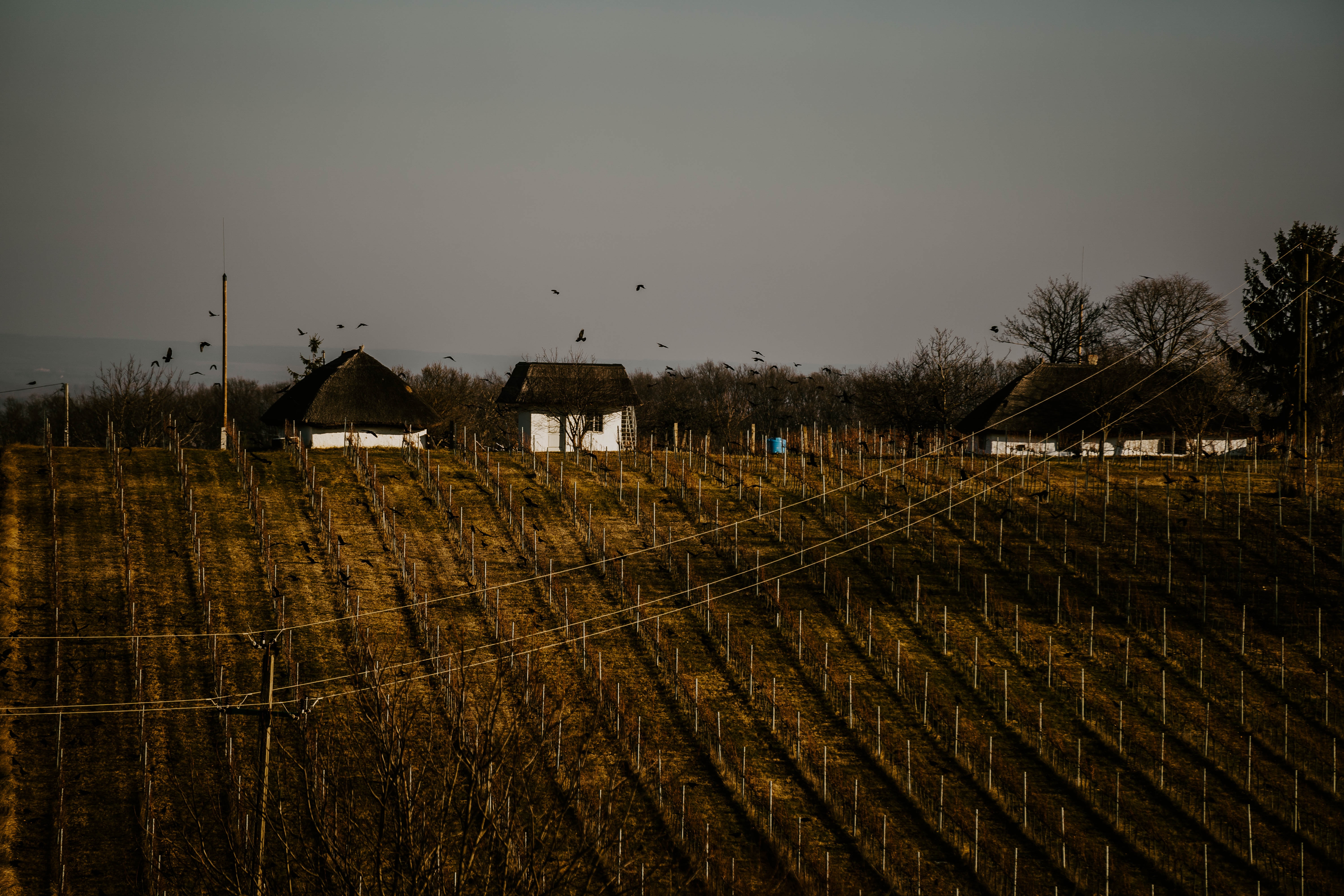Old wooden doors decorated with sunbeams, quaint architectural solutions, cellars carved out of loess walls – you only need to stroll around the press houses built in the 18th and 19th centuries to get an idea of what the vineyards were like in times gone by and how the wine was made and stored by the winemakers of the day. An ideal trip in winter sunshine, we took a relaxed tour around four rows of historic cellars, two on each shore, to create the following image galleries.
Aszófő/Vörösmáli cellars
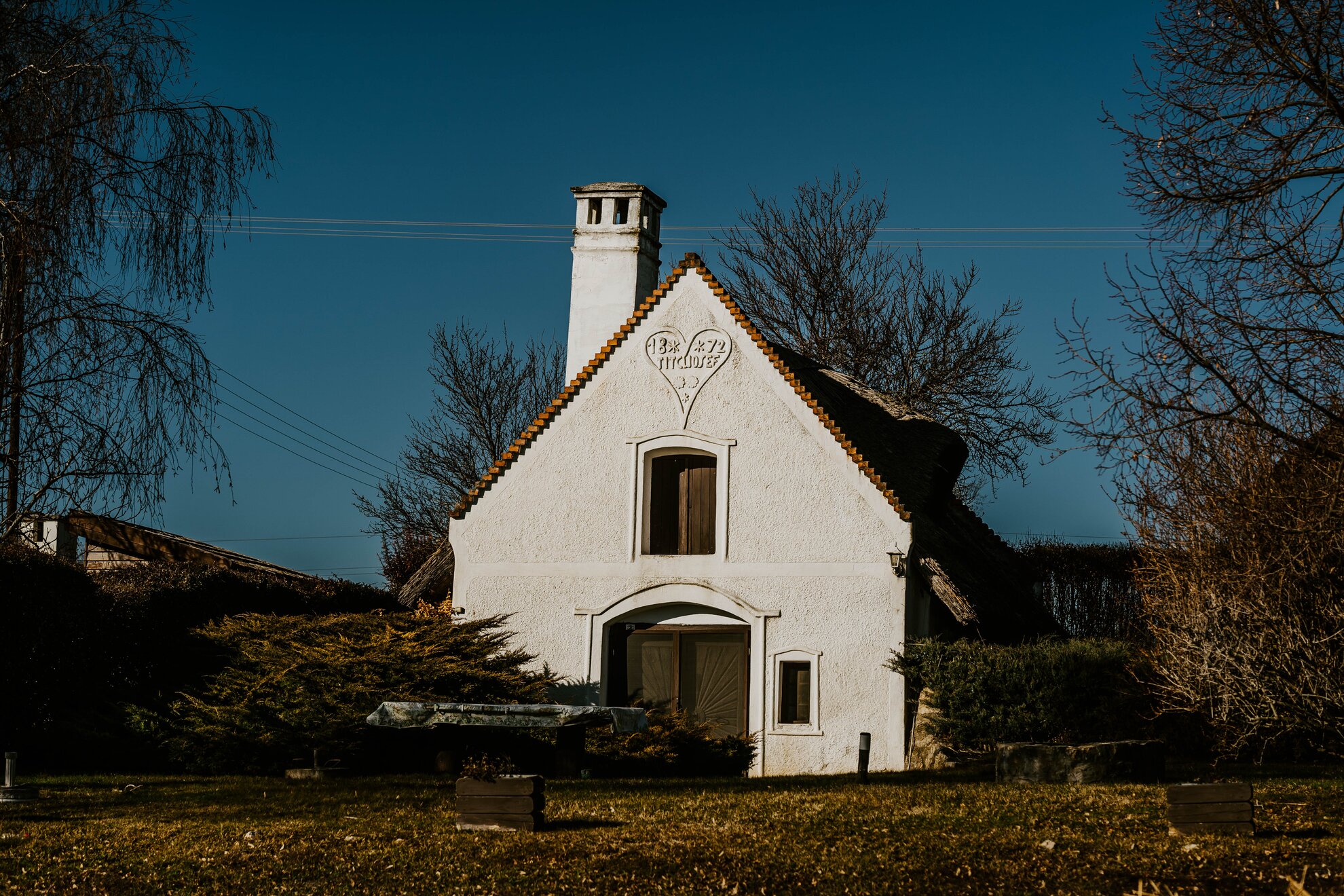
The area between the upper road connecting Aszófő with
Balatonfüred and the railway tracks is called Vörösmáli-dűlő. It’s worth taking
a walk between the press houses and the vineyards just for the panorama, but
the area merits further investigation because of the uniformly thatched-roofed,
heritage-protected cellars overlooking the Tihany Peninsula, built between 1848
and 1883.
There were strict rules for their construction, which the Abbot of
Tihany laid down in a letter of agreement issued in 1841. He determined the
location of the cellars and paths for horse-drawn carriages and stipulated that
fruit trees could not be planted in the vineyard. Permission was granted in
1845, after the vineyards had begun to bear fruit.
The doors of the press houses lined up in a row also feature motifs depicting the sun rays in the Balaton Uplands, and the plaster of the pediments is also decorated in unique fashion.
An architectural solution called an iszling was used in the area, allowing covered protruding side walls to create an external, protected workspace. The small 4x4-metre press houses open into vaulted cellars.
How to get there
By train: Direct service every 2hrs from Budapest-Déli to Aszófő, journey time 2hrs.
By car: 8241 Aszófő, Rákóczi utca. From the centre of Aszófő, leaving the Szálka Bistro, head 200 metres up Rákóczi utca, then turn right. The row of cellars begins shortly afterwards on the left.
Balatonberény/Műemlék pincesor
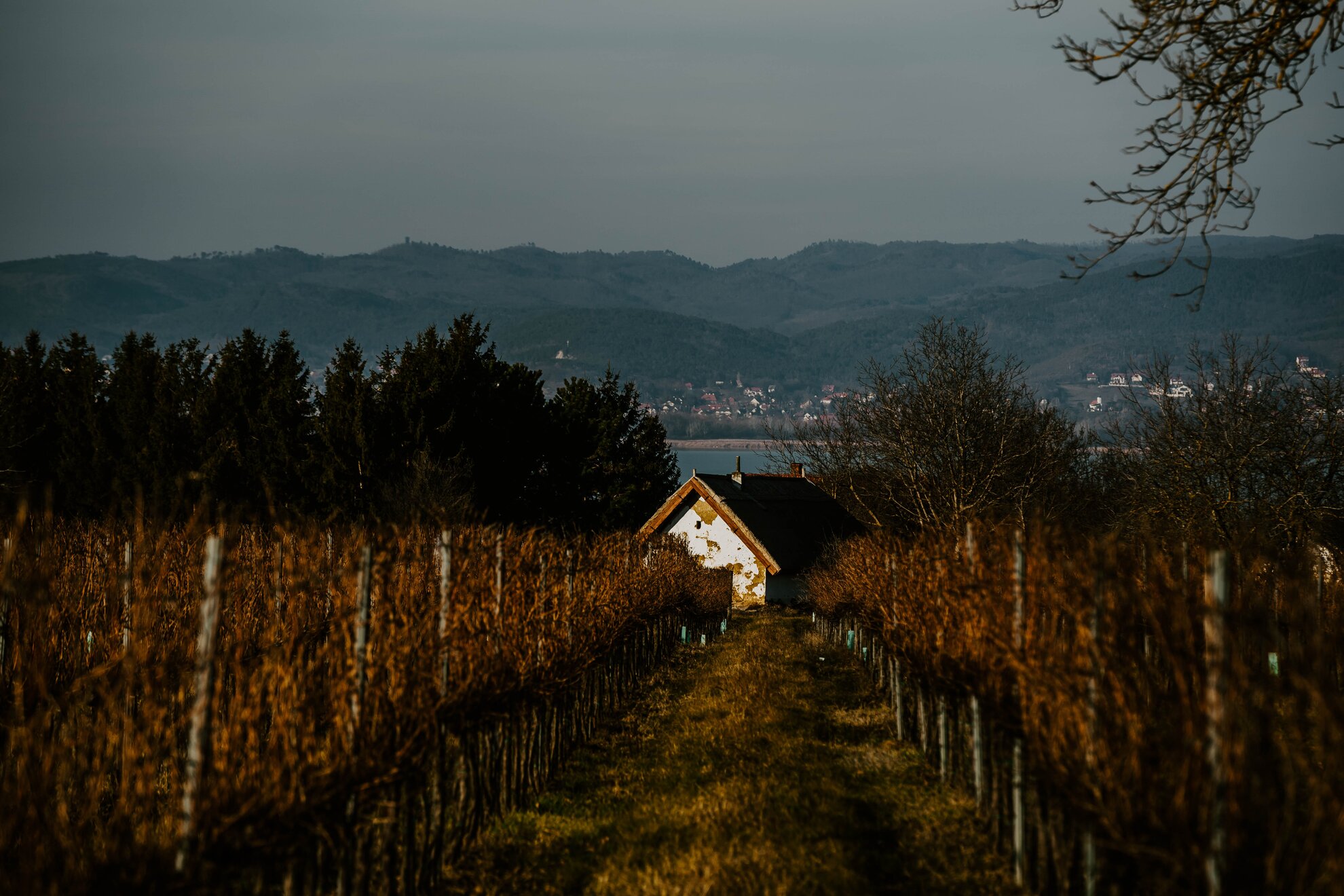
Viticulture has been present in the history of Hungarian settlements in the western part of Lake Balaton from the very beginning. The vineyards on the outskirts are cited in the first documented mention of the village in 1082.
The oldest part of the vineyard hill in Balatonberény is the area known as Öregbokros on the eastern edge of the village, next to Kúrúr. The construction of the press houses at the Műemlék wine cellars began at the end of the 18th century. The walls were made of clay from Bokros Hill, and reeds from Lake Balaton and Nagyberek were used to cover the roofs.
Although some press houses burned down during World War II, most perished due to
neglect. Today almost 100 remain. The cellars are part of the Béla Hamvas wine
route, named after the author of The Philosophy of Wine, written here in 1945.
The stops along the way allow you to meditate on life and admire the
panorama dominated by the monadnocks on the north shore opposite. A vineyard
lookout tower was also built along the trail. Although only five metres high, it
affords a beautiful panorama of Keszthely Bay, the aforementioned monadnocks
and the Tihany Peninsula.
How to get there
By train: From Budapest Déli direct to Balatonberény every 2hrs or change at Balatonszentgyörgy, journey time 2hrs 30mins.
By car: Head from the cemetery at 8648 Balaronkeresztúr, following route 7.
Balatonfőkajár/loess cellars
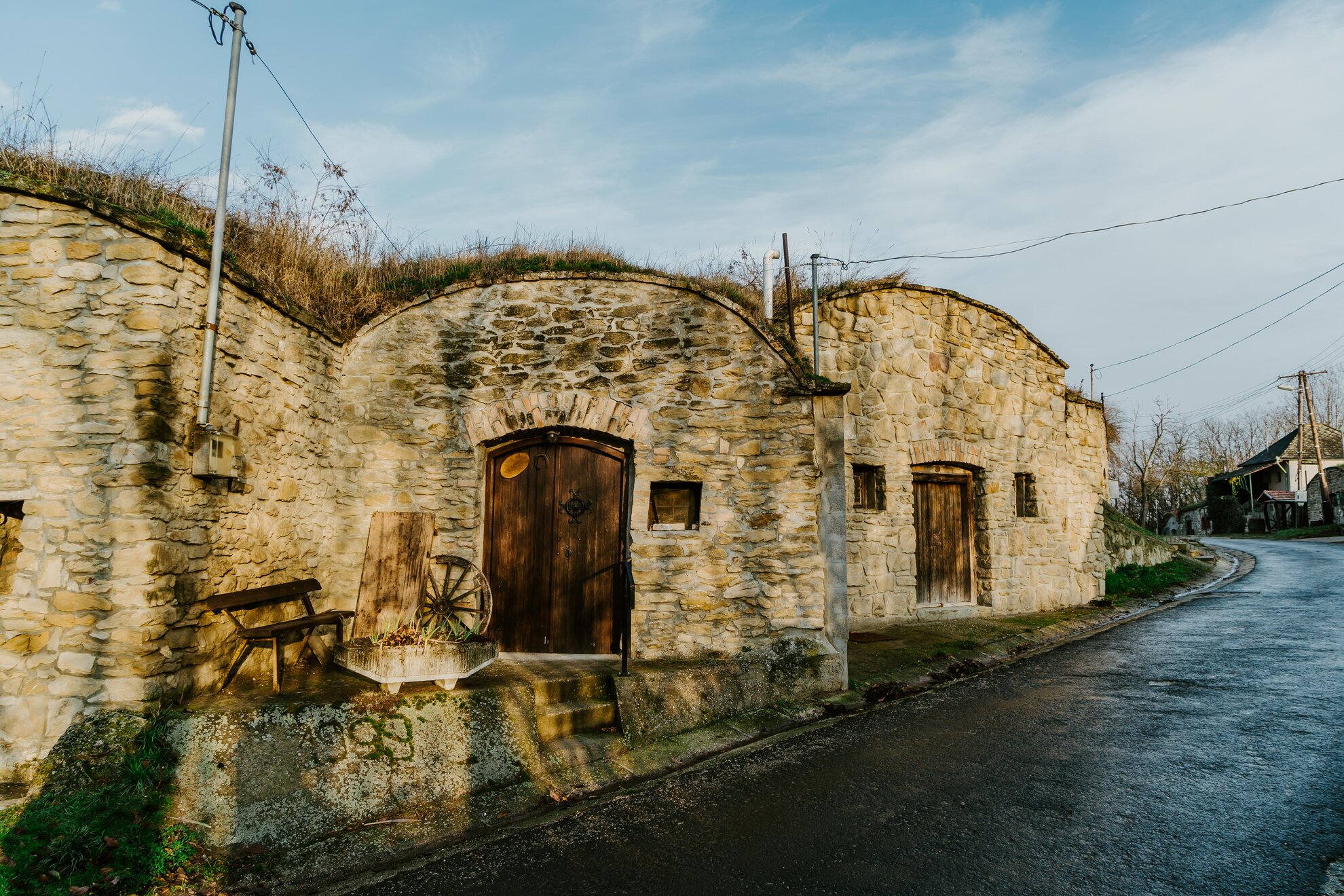
Walking between the ancient cellars of Balatonfőkajár
at the gates of Lake Balaton, it feels like the first page of a strange fairy tale.
About 30-40 cellars line up next to each other in the immediate vicinity of the
cemetery, in a triangle surrounding Ady Endre utca, on the same side as the deep paths.
Some were built on the side of the cemetery hill, literally. If you walk
through the cemetery, you reach the top of the cellars and can see the strange
buildings from above. Numerals and, in some places, owners' names, can be found on the cellar gables, built in the 18th century
using quartz phyllite hundreds of millions of years old.
Closest to the street, there are several crumbling cellars in poor condition, which exude a slightly sad atmosphere in the autumn and winter silence. But it’s not hard to imagine how different this place is when the owners open the old double doors, taste the wine and fill the place with life. You only need look at the grinning statue at the top of one of the cellars.
How to get there
By train: Budapest-Déli to Balatonfőkajár-felső, changing at Székesfehérvár, overall journey time 1hr 20mins-1hr 50mins.
By car: From the cemetery car park, 8164 Balatonfőkaja, Ady Endre utca 5.
Also nearby: Walk to Somlyó Hill, where the oldest rock variety in Transdanubia, quartz phyllite, can be seen on the surface.
Szólád/loess cellars
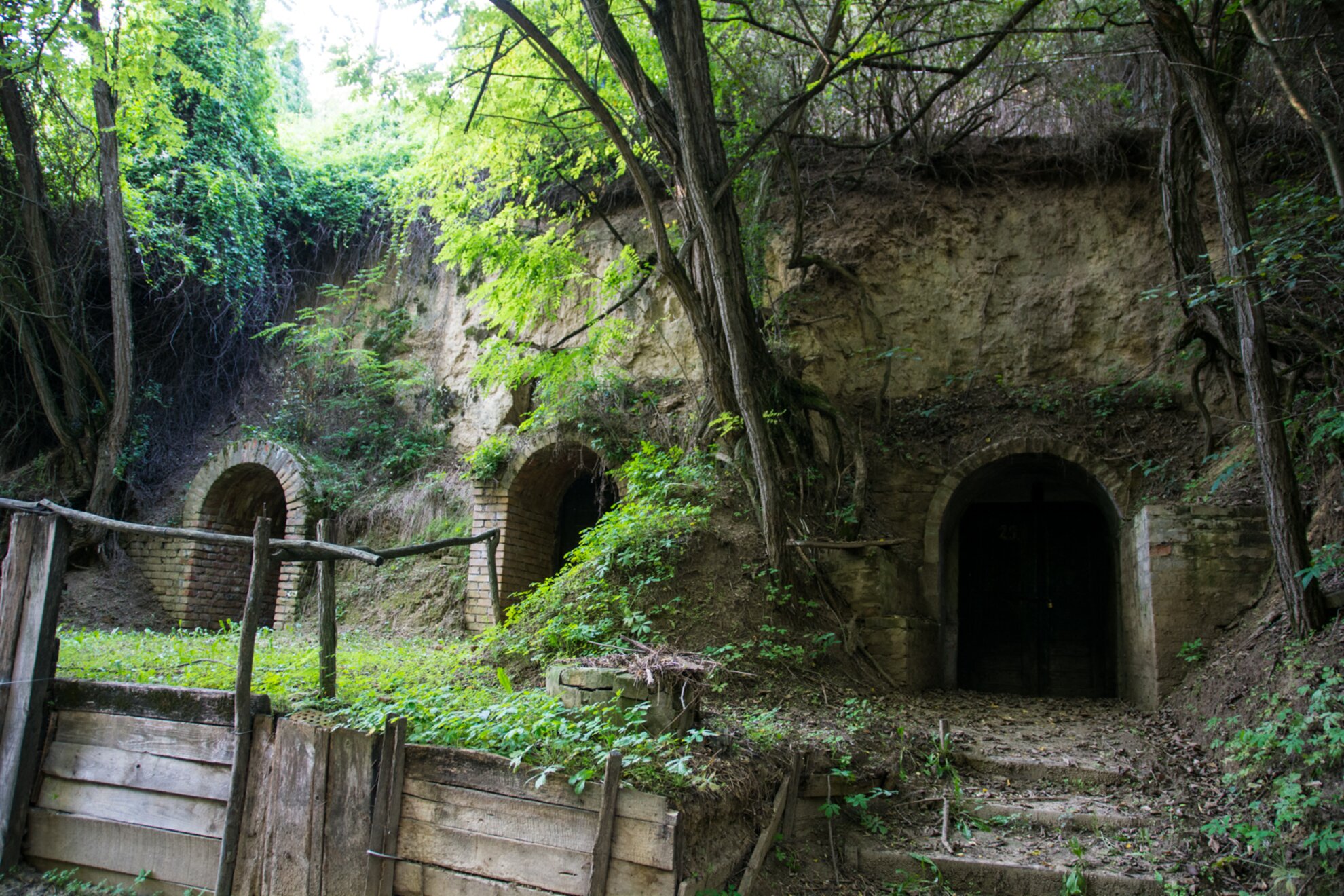
Known for its row of loess cellars, Szólád is located 4km south of Balatonszárszó. The cellars carved into the loess wall were used as hiding places during World War II. As the temperature is constant all year round, they are also ideal for storing and maturing wine.
